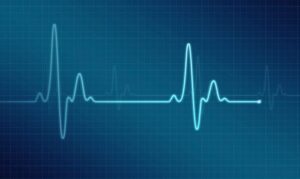
Choosing the Best Vital Signs Monitoring Platform: What Post-Acute Care Facilities Should Know
In modern healthcare, real-time oversight of patient vital signs is essential for delivering high-quality care, managing resources effectively, and ensuring rapid response to patient clinical deterioration.
Vios Medical bridges the gap between overburdened staff and real-time monitoring oversight by leveraging medical-grade sensors and a dedicated, real-time offsite monitoring service to enhance care for post-acute care (PAC) patients. This approach ensures that vital signs are continuously evaluated by healthcare professionals, which ultimately helps facilities address staffing challenges, improve clinical workflows, and respond to rapidly changing patient conditions.
Explore key factors PAC facility administrators must prioritize when evaluating vital signs monitoring solutions for clinical environments:
Vital Signs Monitoring Data Accuracy & Reliability
Accurate and timely data is essential for clinicians to monitor patients effectively and make life-saving decisions. When choosing a hospital vital signs monitoring platform for post-acute care facilities, administrators should focus on remote patient monitoring (RPM) solutions that deliver medical-grade accuracy and reliability.
Real-Time Monitoring for Critical Insights
Clinical settings require continuous, real-time monitoring of vital signs such as heart rate, respiratory rate, and oxygen saturation to assess patient conditions. A real-time vital signs platform built with post-acute care hospitals in mind should capture and reflect up-to-the-second data, enabling early detection of potential problems for life-saving decisions. Vios Medical’s patient monitoring system offers accurate, reliable data to give clinical teams the information they need to intervene promptly.
Medical-Grade Sensors
Consumer-grade devices are insufficient for clinical settings due to reliability concerns. Top vital signs monitoring companies use advanced, medical-grade devices to ensure platform data accuracy, even in challenging care environments, such as post-surgery recovery wards or cardiac telemetry units. Medical-grade devices have been designed and tested specifically for the conditions and environments that present in a hospital environment.
Data Security & HIPAA Compliance
Post-acute care facilities and hospitals handle vast amounts of sensitive patient data. To safeguard patient privacy, robust patient monitoring solutions must comply with HIPAA standards. This includes advanced encryption protocols for data transmission and storage and regular security audits to mitigate potential vulnerabilities.
Audit & Update Procedures
Ensuring the integrity and reliability of post-acute care hospital patient monitoring platforms requires ongoing vigilance. Choose a vendor that conducts regular audits and software updates to maintain optimal performance and security. Routine audits ensure compliance with evolving healthcare standards while updates address emerging vulnerabilities, improving platform stability and functionality over time.
By partnering with a provider committed to proactive maintenance, PAC facilities can trust that their systems remain secure and equipped to handle the demands of a dynamic clinical environment. Reliability goes beyond accuracy. Reliable remote monitoring solutions like Vios Medical’s make sure no critical condition is missed, delivering immediate alerts for events like arrhythmias while minimizing false alarms. This level of accuracy ensures better clinical decisions and patient safety.
User-Friendly Vital Signs Monitoring Software & Devices
Efficient healthcare workflows rely on user-friendly tools that reduce clinicians’ administrative burden. RPM platforms must align with post-acute care operations and support staff with streamlined features while remaining intuitive, accessible, and easy to use.
- Patient-Friendly Devices for Clinical Adherence: While patients are monitored in PAC, comfort is essential for protocol adherence. Non-invasive, wireless devices allow for ease of movement, reducing patient stress while maintaining accurate data collection.
- Intuitive Dashboards for Actionable Data: In fast-paced PAC environments, clinicians need software with clear, intuitive dashboards that display actionable insights at a glance. Customizable views that emphasize critical trends, such as a sudden spike in heart rate, enable rapid decision-making.
- Customizable Alerts to Avoid Alarm Fatigue: Alarm fatigue is a significant challenge in clinical settings. Software and services should allow administrators to set customizable thresholds for vital sign alerts, ensuring clinicians are notified only when necessary. This reduces distractions while ensuring rapid responses to critical changes.
- EHR Compatibility & Interoperability: Software must integrate smoothly with existing electronic health record systems to provide a unified patient data view. Interoperability with other devices, such as bedside hospital vital sign monitors, ensures a cohesive care workflow across multiple care units and campuses.
- Workflow Automation: By automating data collection and reporting, RPM platforms can reduce inconsistencies and measurement times associated with manual measurements, allowing clinicians to focus on patient care. Automation also minimizes human error, ensuring data entry accuracy while improving operational efficiency.
- Training & 24/7 Support: In-depth training programs are important in helping clinicians and IT staff maximize software and device potential. Vendors should offer robust onboarding and round-the-clock technical support to resolve issues quickly, ensuring minimal disruption to workflows.
Vital Signs Monitoring Scalability & Support
As post-acute care facilities face fluctuating patient volumes and evolving clinical care requirements, monitoring platforms must provide more than just scalable technology—they must also offer the flexibility to solve staffing and diverse census challenges. Vios Medical’s monitoring solution delivers real-time oversight and operational support to help PAC facilities navigate surges in patient admissions so that no patient is overlooked, even during peak periods.
Adaptability to Clinical Environments
The ideal hospital patient monitoring system can be deployed seamlessly across various post-acute care settings, regardless of patient acuity levels. This includes general care units monitoring multiple patients continuously during a wide range of physical activities and clinical scenarios. A good system is also capable of monitoring both small and large patient populations, scaling alongside patient volume.
Census Flexibility for Changing Demands
Admissions can surge unexpectedly, especially during weekends or emergencies, straining existing resources. Vios Medical’s offsite oversight services give post-acute care facilities the adaptability to manage census fluctuations without sacrificing the quality of care. By leveraging real-time monitoring conducted remotely, PAC staff can focus on direct patient care while achieving continuous oversight of vital signs for all patients across all units. This alleviates the burden on central nursing stations and monitoring bunker personnel and ensures that no critical alerts are missed.
Vital Signs Monitoring Cost-Effectiveness & ROI
Post-acute care facility budgets are often constrained, making cost-effectiveness and long-term ROI critical considerations when selecting a solution for the centralized monitoring of hospital patients.
Transparent Pricing for Predictable Budgets
Healthcare facilities should seek vendors that offer transparent pricing models free from hidden costs. Predictable pricing enables better financial planning and helps facilities valuate the true value of their investment. By enabling early interventions, reducing hospital-acquired complications, and preventing unnecessary readmissions, vital signs monitoring solutions can drive significant cost savings. Post-acute care hospitals can achieve a higher ROI by improving operational efficiency, reducing adverse events, and optimizing resource allocation. With Vios Medical, healthcare facilities can accomplish all of this through affordable, high-quality technology and services that deliver measurable improvements in both clinical and financial outcomes.
Proven Success Across Clinical Settings
The best vendors must be able to demonstrate real-world success across multiple healthcare settings and environments. Look for case studies that reflect positive outcomes across various departments, such as:
- Post-Acute Care: Tracking recovery progress for hospitalized patients
- Cardiac Telemetry: Continuous monitoring of heart function in high-risk patients
- Emergency Departments: Real-time insights for patients under observation
- General Care Units: Managing multiple patient populations with varying acuity levels
Learn More About Vios Medical
Choosing the right vital signs monitoring platform for hospital use requires careful consideration of accuracy, scalability, integration, and long-term ROI. Administrators must prioritize platforms that streamline clinical workflows and adapt to varying care settings—all while maintaining the highest security standards.
Vios Medical’s monitoring solution is tailored to the unique demands of post-acute care environments, combining real-time oversight, medical-grade accuracy, and flexible support for staffing and census challenges.
Learn how Vios Medical can elevate your PAC facility’s monitoring capabilities today. Contact us to schedule a consultation and discover how our solutions meet your staff and patient’s needs.



